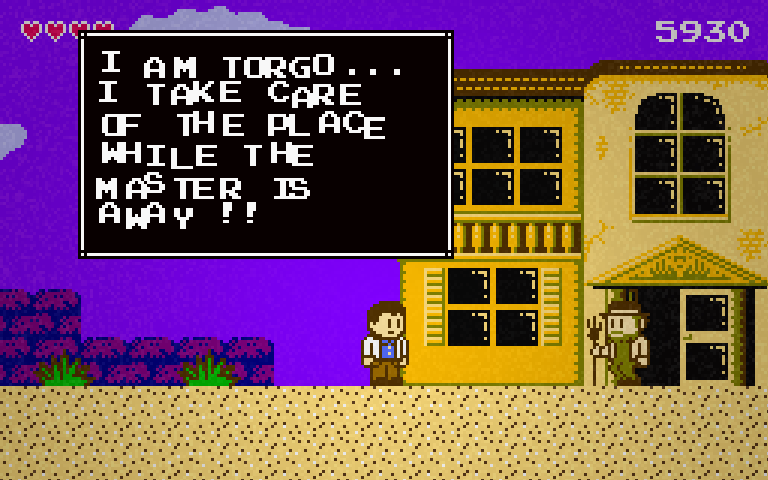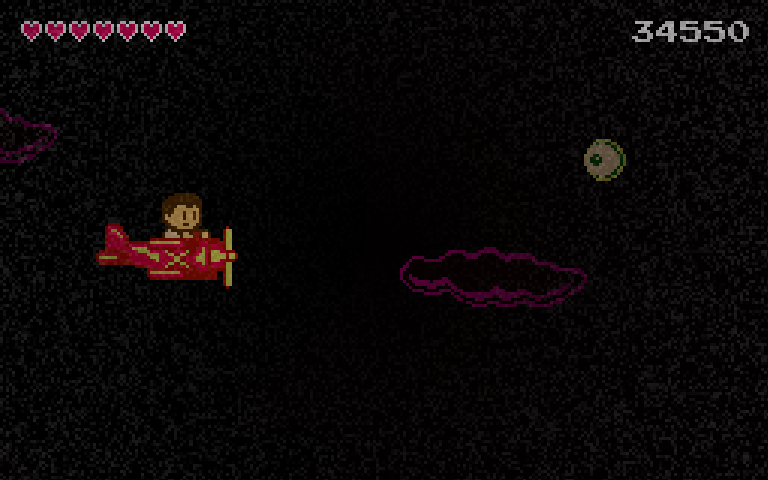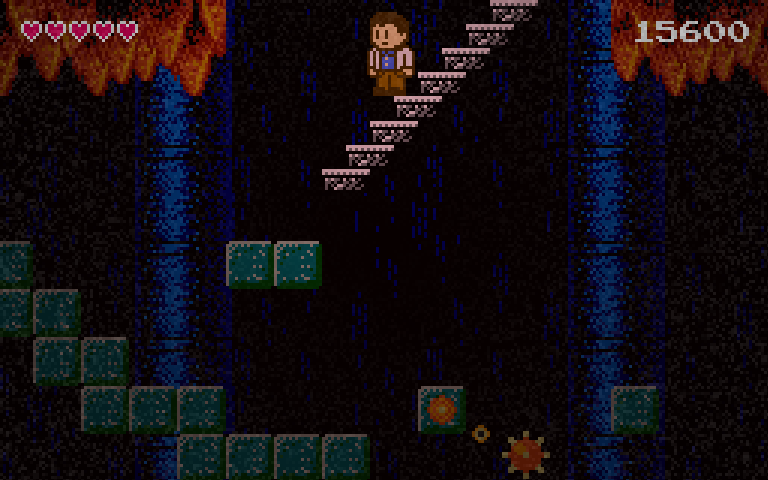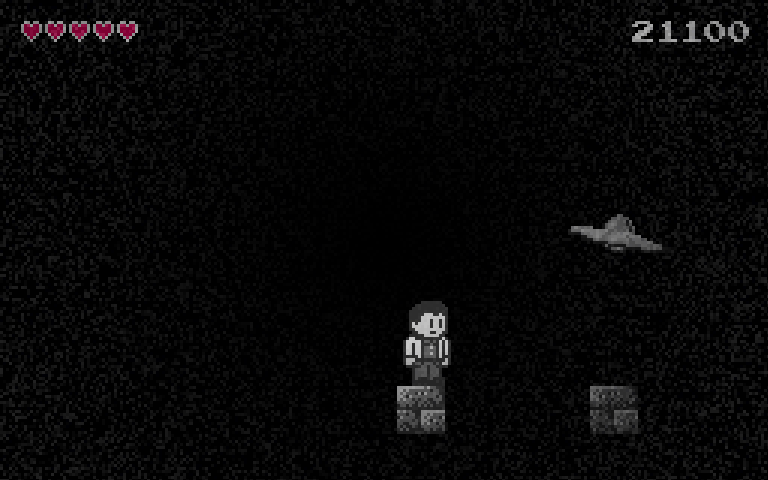Developer’s Site || Steam Page
So many fans of Mystery Science Theater 3000 are familiar with Manos: The Hands of Fate that this B-movie has gained a cult following of its own, so it should come as no surprise that there’s a fangame out there. In fact, there are somehow no less than three wildly different Manos fangames floating around (and likely more), but this one is my favorite. Combining references to the movie itself with nods to other fan-favorite MST3K movies and NES games for good measure, MANOS: The Hands of Fate – Director’s Cut provides a thoroughly enjoyable and varied, if not particularly original, retro action platforming experience.
The gameplay is about as simple as an action platformer can get. Taking on the role of Michael, you must fight against The Master, his servant Torgo, and various B-movie villains. The only tools at your disposal are a standard jump and a gun, which can be shot very quickly though the bullets do not quite go all the way to the end of the screen before disappearing. Each stage has a ‘Hand of Fate’ to collect, some more well-hidden than others, and each of these hands permanently increases your maximum health by one in addition to fully restoring any health you may have lost. You also occasionally find shotguns, which turn your normal attack into a triple spread shot to help with hitting small or jumping enemies, but you need to be careful as you will lose the shotgun if you get hit. There definitely aren’t any bells and whistles to speak of here, but the game works perfectly fine as a simple and straightforward platformer.

Stage variety is where this game’s true strength lies. This is a rather short game which can be completed in under half an hour and as there are a total of eight stages that means you’ll generally only spend five minutes or less in each stage on an average playthrough. The brevity here works to the game’s advantage as the stages themselves are generally rather distinctive. In addition to new enemies or hazards being introduced in every single stage except for the final one (which has a unique gimmick to it), many of the stages follow a Mega Man-esque design philosophy to their layouts where players must progress in all four directions rather than just moving from left to right or down to up. Even stages with similar layouts have enough unique elements to them that they don’t feel generic or overly identical. For example, both Stage 4 and Stage 7 are horizontal autoscrolling stages, but the former slightly limits your vision due to taking place at night and the latter is the only stage to contain invincible flying saucer enemies which fly at you in various wave patterns. The only stage which is hurt by this general sense of brevity is Stage 5, which is a shmup-style stage and is so ridiculously short that it consists of little more than a boss fight and a handful of easily dodged enemies and hazardous walls.

Difficulty is the one area where MANOS: The Hands of Fate – Director’s Cut runs into some issues on both ends of the spectrum. Boss fights are far too simplistic and rarely consist of little more beyond the boss moving back and forth across the screen while occasionally jumping or abruptly changing directions. On the other side of things, there are a few jumps in the later stages which feel overly demanding, especially in Stage 6 where you must make fairly precise jumps between platforms while dodging multiple swinging spiked balls and rising bubbles simultaneously. The multiple difficulty settings provided also don’t provide any meaningful changes beyond taking away shotguns, healing items, 1ups, and possibly even checkpoints while boosting enemy damage; if any changes are made to the stage design and enemy placement, they are minor enough that I did not notice them. There is an unlockable ‘Torgo Mode’, but other than allowing you to play as Torgo the only changes are a slower rate of fire and deliberately less responsive controls which, like the multiple difficulty settings, do increase the difficulty, but not in a particularly interesting way.

Despite the above issues, the difficulty actually is well-balanced overall. Enemies are usually placed in locations where they can be as effective as possible and a healthy variety of flying and ground-based enemies allows for some interesting and dangerous combinations. You are far more likely to die due to falling into a pit (or being hit into one) than due to taking too much damage, but checkpoints and especially extra lives are very common and the most difficult platforming segments almost always have both a checkpoint and an extra life nearby. To be clear, this generous checkpointing does not excuse the occasions when the game dips into being overly demanding of players, but it definitely works well with the many segments which are difficult yet fair. As to replayability, points do absolutely nothing as far as I can tell and are especially worthless as the lack of a time limit allows players to endlessly increase their scores by shooting the infinitely-spawning bubbles in Stage 6 if they have the patience for such a thing, but the game does keep track of your playtime, both at the start of each stage and after the credits roll, so it’s aiming for as low of a time as possible is still viable even if points are negligible.

MANOS: The Hands of Fate – Director’s Cut is definitely a game which feels a bit too thin and could have benefited from more in the way of extra content and/or some more substantial differences between its difficulties, especially since it’s the only Manos fangame I know of to come with a price attached to it (though an admittedly very modest one of $2.99). However, while I wish there was a bit more to the overall package, the content which is here is certainly enjoyable and the many references scattered throughout should serve to add an extra layer of entertainment for just about any B-movie fan.